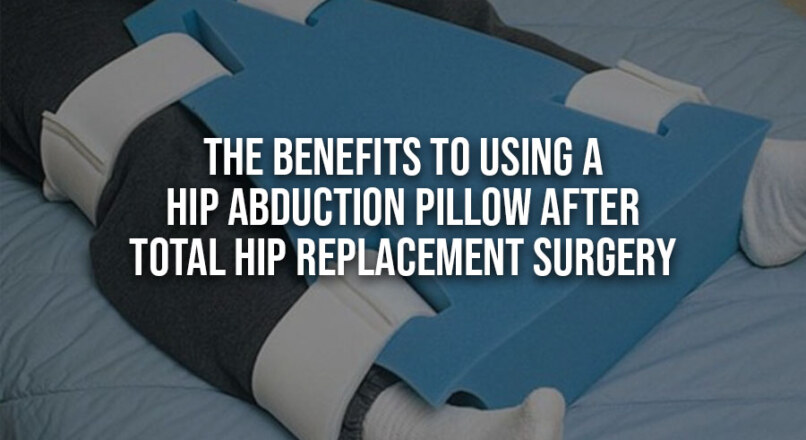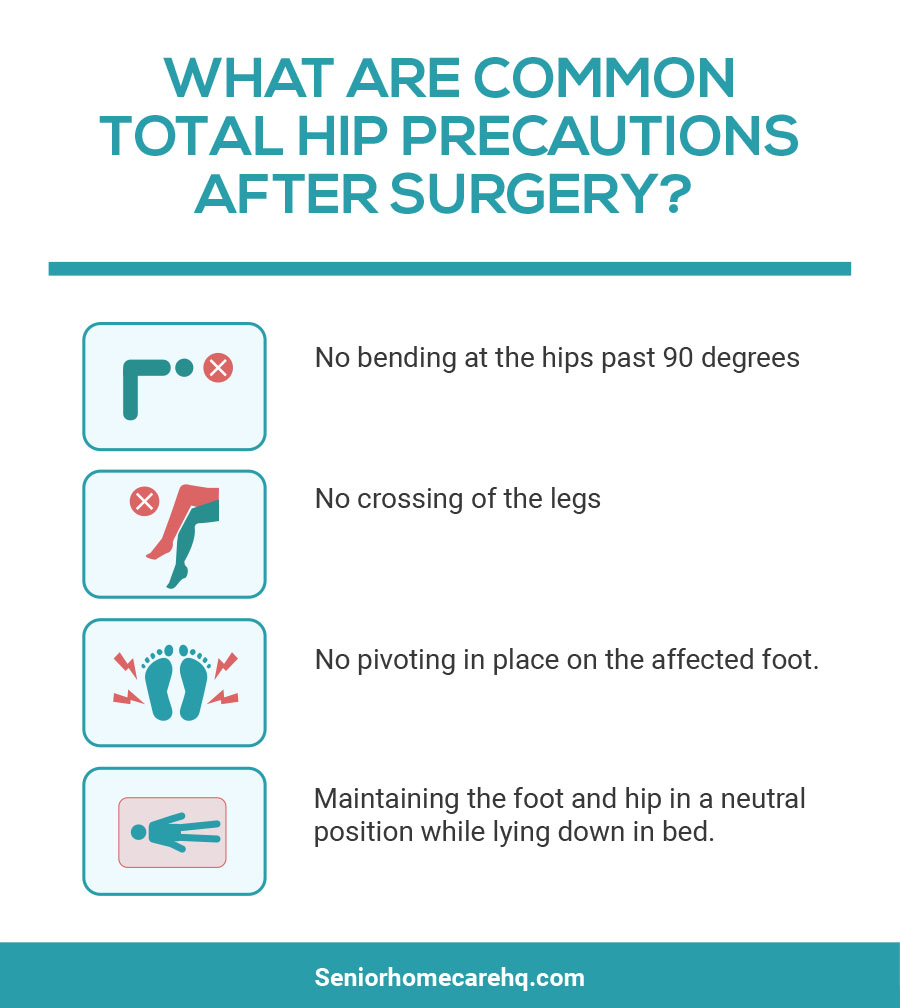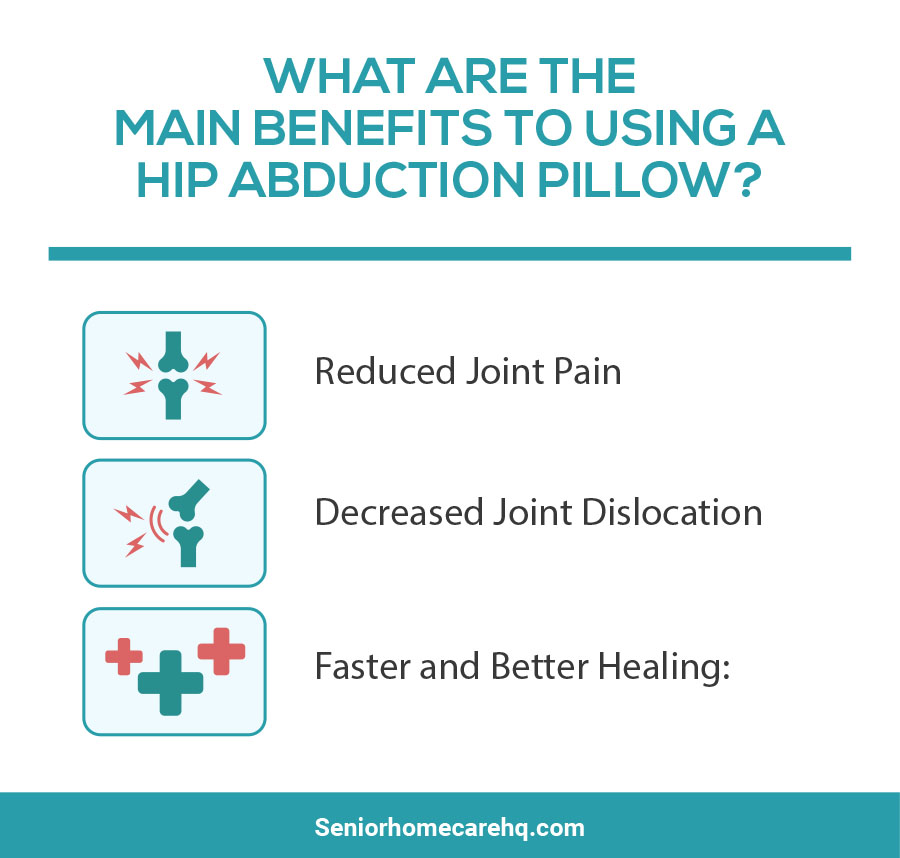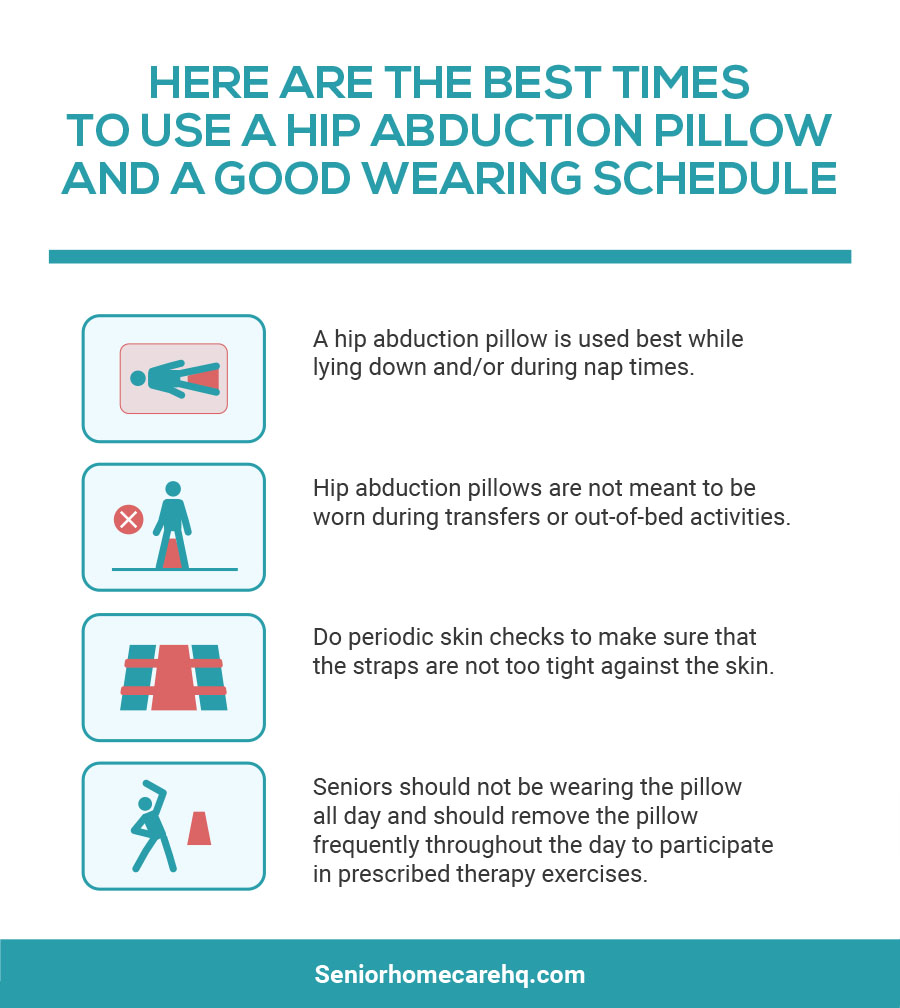
3 Great Benefits To Using A Hip Abduction Pillow After Total Hip Replacement Surgery
[su_highlight]3 Great Benefits To Using A Hip Abduction Pillow After Total Hip Surgery[/su_highlight]
In this post we will discuss 3 great benefits to using a hip abduction pillow after total hip replacement surgery.
Hip surgery, rehabilitation, and recovery has drastically changed for the better over the last 50 years. Patients can get into the operating room, rest for a few hours in the inpatient recovery wing, and sometimes even go home the very same day.
Of course, this varies for every individual but it is amazing how far the medical world has come.
We are going to review what is involved in hip replacement surgery, summarize typical precautions, describe the purposes behind the hip abduction pillow, and provide recovery benefits and resources for obtaining the pillow for everyday use.
[su_highlight]What Is Total Hip Replacement Surgery and What Are The Hip Precautions?[/su_highlight]
A total hip arthroplasty (THA) or a hip replacement surgery is where a surgeon will go in and remove a deteriorated hip joint and replace it with a brand new orthotic joint. The surgery involves a full repair of the ball-and-socket joint to restore fluid movement of the hip joint.
Surgical incisions can be made from multiple points including posterior (the back), anterolateral (front and side) and anterior (the front) aspects of the body. Incisions that are made more anteriorly tend to have less movement and weight-bearing precautions that posterior hip precautions.
Each patient should review their post surgical hip precautions, restrictions and limitations multiple times with nurses and therapists, prior to being discharged from the hospital.
Possible precautions may include the following (especially if a posterior hip replacement is done):
[su_service title=”No bending at the hips past 90 degrees” icon=”icon: close” icon_color=”#cc130b”][/su_service]
[su_service title=”No crossing of the legs” icon=”icon: close” icon_color=”#cc130b”][/su_service]
[su_service title=”No pivoting in place on the affected foot.” icon=”icon: close” icon_color=”#cc130b”][/su_service]
[su_service title=”Maintaining the foot and hip in a neutral position while lying down in bed.” icon=”icon: close” icon_color=”#cc130b”][/su_service]
Another precaution may include walking backwards with the unaffected hip first and then slowly dragging the affected leg along to avoid ripping open incisions.
Oftentimes, patients can put as much weight down as they can tolerate fresh out of surgery. Patients with cormorbidity conditions should check with their doctors to see if additional weight-bearing precautions should be considered.
[su_highlight]What is a Hip Abduction Pillow and Why Do You Need to Have One?[/su_highlight]
A hip abduction pillow is an orthotic pad that you place between your thighs to keep your legs apart. These days, many hip abduction pillows can be strapped to the legs to prevent slipping.
Abduction means “away” while adduction means “to add”. If you are bringing your legs together, then you are adducting your hips which can be extremely uncomfortable and potentially dangerous after hip replacement surgery.
The hip abduction pillow is ideal for maintaining the alignment of the hip joint while lying down in bed. This helps prevent the new joint from sliding out of place or causing unnecessary strain or pain.
Hip abduction pillows are useful for seniors who have “loosy goosy” joints to begin with and who are at higher risk for popping the hip joint out of socket.
Seniors may require a hip abduction pillow as recommended by their doctor if they have experienced a hip joint dislocation, a hip fracture, an open-reduction internal-fixation hip surgery, or occasionally a total hip replacement surgery.
[su_highlight]What Are The Main Benefits to Using a Hip Abduction Pillow for Seniors Living at Home?[/su_highlight]
Here is a list of a few benefits that seniors can obtain from appropriately using a hip abduction pillow:
[su_service title=”Reduced Joint Pain:” icon=”icon: check” icon_color=”#0bcc1e”]Lying down with the hips pulled inward can cause a lot of strain on the hip muscles and joints. Having a hip abduction pillow that keeps the hips apart can potentially reduce that strain and promote better rest and sleep.[/su_service]
[su_service title=”Decreased Joint Dislocation:” icon=”icon: check” icon_color=”#0bcc1e”]The goal of the pillow is to keep the hips neutral and aligned. That way, the hip joint has a reduced chance of sliding out of socket while in bed which can be excruciating and require medical attention.[/su_service]
[su_service title=”Faster and Better Healing:” icon=”icon: check” icon_color=”#0bcc1e”] Keeping the hips neutral with the pillow means that the hips have a chance at recovering and healing properly which leads to better walking and overall movement.[/su_service]
[su_highlight]What Are The Types of Hip Abduction pillows Available on the Market?[/su_highlight]
With the booming online market, there are endless possibilities when it comes to types of hip abduction pillows available. The point is to find one that best fits your needs.
Consider the following:
[su_service title=”The Material:” icon=”icon: arrow-right” icon_color=”#0b41cc”] Most abduction pillows are made of foam-based materials that contour to the thighs. Research the types of materials available and test-run a few with a medical equipment provider if possible.[/su_service]
[su_service title=”The Abduction Angle:” icon=”icon: arrow-right” icon_color=”#0b41cc”] Talk to your doctor before settling on an abduction angle. He/she may have recommendations about how far apart your thighs should be. Research your options regarding the angles and sizes available.[/su_service]
[su_service title=”The Fit:” icon=”icon: arrow-right” icon_color=”#0b41cc”] Each pillow online should come with information regarding the size (length) and body type (pediatric, adult, bariatric).[/su_service]
[su_service title=”The Accessories:” icon=”icon: arrow-right” icon_color=”#0b41cc”] As mentioned previously, many abduction pillows come with straps to prevent slipping. Talk to your physician about whether or not you require an abduction pillow, pad, or device for sitting or out-of-bed movement and research your options.[/su_service]
[su_highlight]When Is The Best Time to Use a Hip Abduction Pillow and a Good Wearing Schedule? [/su_highlight]
A hip abduction pillow is used best while lying down and/or during nap times. Seniors wearing the pillow can sleep on their backs and their sides.
In fact, clinicians will encourage the wearer to change their position every 1 to 2 hours to prevent sores and skin breakdown.
Hip abduction pillows are not meant to be worn during transfers or out-of-bed activities.
Seniors and their loved ones should do periodic skin checks to make sure that the straps are not too tight against the skin.
Seniors should not be wearing the pillow all day and should remove the pillow frequently throughout the day to participate in prescribed therapy exercises.
[su_highlight]How Long Will You Need to Wear a Hip Abduction Pillow After Total Hip Replacement Surgery?[/su_highlight]
Seniors who have been prescribed a hip abduction pillow should wear the pillow for as long as their physician recommends it. Healing hip injuries or surgical procedures can take several weeks.
[su_highlight]What Can Happen if You Don’t Use a Hip Abduction Pillow at Home After Hip Replacement Surgery?[/su_highlight]
Some seniors can go without a hip abduction pillow after hip surgery and come out at the end of recovery just fine.
These are seniors who already have relatively healthy and strong muscles, ligaments, and tendons in their hips.
Seniors who have compromised muscle tissue, flexibility, and strength could potentially misalign the new hip replacement without the abduction pillow which requires returning back to the hospital to have the joint surgically corrected.
Repeated surgeries can also make seniors at an increased risk for hospital-acquired infections.
[su_highlight]Summary To The Benefits of Using a Hip Abduction Pillow After Total Hip Replacement Surgery[/su_highlight]
Hip abduction pillows have their rightful place in the post-surgical and hip injury realm. Regular and appropriate use of these pillows can aid in better and safer hip healing and recovery.
Consult with your physician and/or surgeon to discuss whether or a hip abduction pillow will help you at home or not.
Do your research and have a loved one help you so that you can make a well-informed decision prior to purchasing a pillow for yourself and your recovery path.




Leave a reply